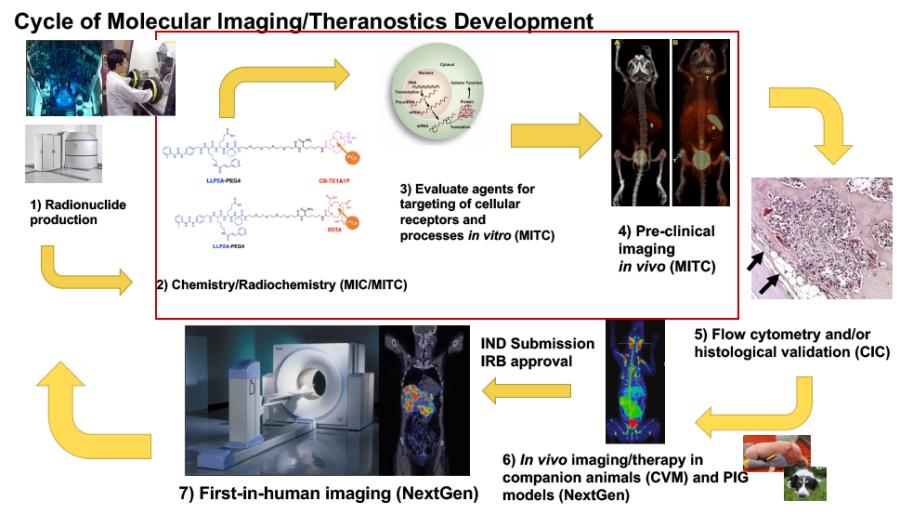
The term “theranostics” describes agents that are both diagnostic and therapeutic in nature. The main success story thus far for theranostic agents is Lutathera® (177Lu-dotatate; FDA approved in 2018) for treating neuroendocrine tumors, which is used with the companion diagnostic NetSpot (68Ga-dotatate; FDA approved in 2016). It is anticipated that theranostics for treating metastatic prostate cancer will be FDA-approved in the near future.
How is it used?
Certain molecular targeted compounds can be labeled with radionuclides for imaging by single photon emitted computed tomography (SPECT) and/or PET, as well as beta and/or alpha particle emitting radionuclides for targeted radiopharmaceutical therapy (TRT). The leader of MITC, Dr. Anderson, was an early innovator in developing PET agents for imaging neuroendocrine tumors and determining the dosimetry and toxicity of 177Lu-dotatate in rodents.
Future of Theranostics
MITC researchers are working on developing novel theranostics. They will collaborate with cancer researchers at the Ellis Fischel Cancer Center (EFCC) to better understand mechanisms of tumor cell death, the impact on the tumor microenvironment, and how to best combine theranostics with other types of cancer drugs, such as immune checkpoint inhibitors.
Ultimately, MITC will work with clinical trialists at EFCC to bring novel discoveries forward into first-in-human studies.